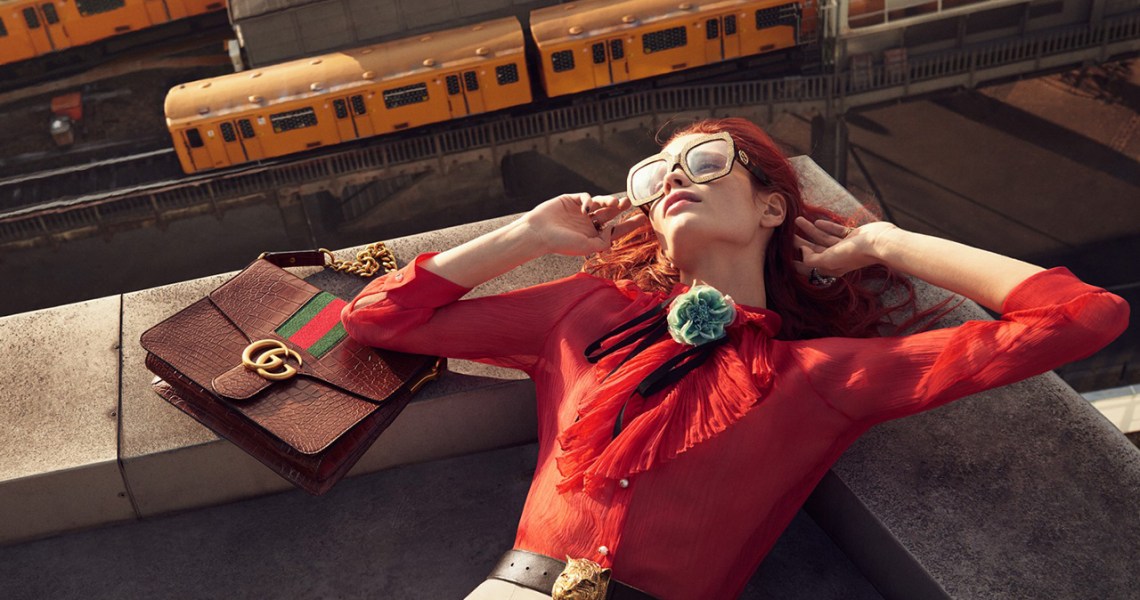Last week, influencers gathered for the launch of a new luxury footwear brand called Palessi, selling shoes for hundreds of dollars. Of course, Palessi was fake — a ruse created by Payless to showcase that its affordable shoes were just as good as (or at least good enough to pass for) luxury shoes.
While this stunt may have gotten Payless some publicity, along with providing a little schadenfreude toward the wealthy shoppers who were duped into buying a $20 pair of shoes for almost $700, it also begs the question of luxury’s complicated relationship with price. Does something have to be expensive to be luxury? Are “luxury” and “affordable” mutually exclusive descriptors?
“There has definitely been a shift in how consumers think about luxury,” said Brian Lee, associate director at Gartner L2. “There has been a ‘democratization’ of luxury fashion, where it is no longer exclusive to people of a certain socio-economic class or group. Due to increasing accessibility and knowledge, primarily through digital channels like online e-commerce, resale and social media, more and more consumers are able to shop luxury products to varying degrees.”
Accessibility vs. exclusivity
That democratization has taken many forms. Resale sites like The RealReal have given more customers than ever access to products from premium luxury houses at a cost that is more affordable. Luxury brands do not often discount their products due to the perceived damage to their brand image that would ensue. That is why luxury brands often sit out of Black Friday. The so-called circular economy has given rise to a large new segment of consumers who are wearing and evangelizing luxury brands, despite not having paid an exorbitant price for it.
“Rent the Runway has a similar effect of creating more familiarity between designer brands and consumers who may not have worn items at as high a price point as before,” said Lauren Price, director of client strategy at Gartner L2. “But there is a notable lack of premium luxury brands on Rent the Runway, as these brands want to maintain that exclusivity.”
Thanks to accessibility of luxury, the question of what the term means has become more individualized. Some, like Italic’s Jeremy Cai, view luxury as something that is aspirational, which changes based on your income level and tastes.
The luxury experience
Luxury can also refer to the quality of the experience that comes along with the product. The service a customer receives when they enter the store, a personalized note from the brand or even beautiful packaging can all be symbols of luxury that are distinct from price and quality of the product.
Ad position: web_incontent_pos1
“There’s a lot more investment in packaging today, and that’s something that can give the same sort of feeling of a luxury brand,” said Corey Pierson, co-founder and CEO of customer intelligence platform Custora. “There are a lot of brands outside of fashion that are not what you might call luxury but are creating customer experiences that are on par with luxury brands.
“I subscribe to a coffee-of-the-month club, and every month it arrives in this beautiful package with a handwritten note from the owner of the company explaining what the coffee is. That’s creating an absolutely luxurious experience. Customer experience is an integral part to creating the feeling of luxury.”
Streetwear’s disruption
One of the biggest disruptors in the relationship between luxury and price is streetwear. Brands that are typically priced much lower than luxury brands compete for the same customers and are spoken of in the same breath.
“A classic example would be Supreme, where MSRP is generally affordable and comparable to many other affordable brands, but they compete with luxury brands due to brand cachet and scarcity due to limited product and distribution,” said Price. “It is in resale when prices ramp up significantly. Similarly, limited-edition shoes and collaborations also create opportunities for non-luxury brands to target the luxury market without necessarily having a luxury price point.”
Sneakers, in particular, add more confusion to the price situation. The majority of people who own Yeezy sneakers probably paid between $700 and $1,000 dollars for a pair, which places them firmly in luxury price territory. But those sales come through the bustling resale market. The actual retail price of the sneakers is usually less than $300. While the actual price may be relatively low, most people will probably pay luxury prices for them.
Ad position: web_incontent_pos2
As the circular economy grows, streetwear continues to dominate fashion and younger generations of consumers with radically different views on their relationship with brands become more central in fashion, luxury must rethink its own relationship with price in order to remain relevant. Ultimately, elements outside of price will be just as, if not more, important to what constitutes luxury, although price may never truly go out the window as a factor in what makes something luxurious.
“Luxury, more than ever in its history, should be defined as a state of mind, just as much as by its hallmarks: exclusivity, craftsmanship, price, quality,” said Chris Paradysz, founder of PMX Agency. “While these have always been true, luxury’s accessibility through technology innovations plus consumer behavioral changes have disrupted its purity. Price still differentiates, but it’s no longer joined at the hip with exclusivity.”




